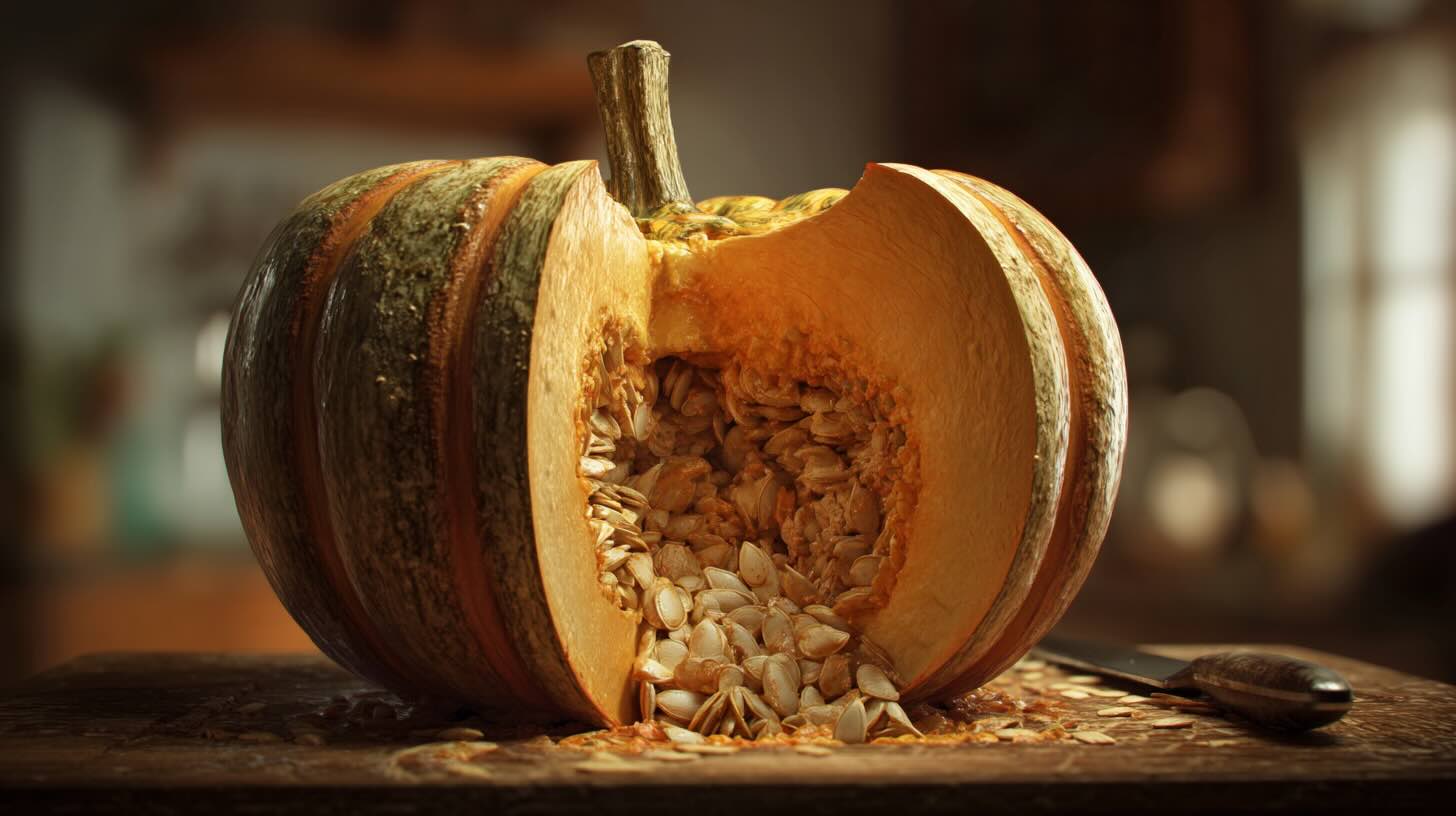July 21
The pumpkin is an autumnal treasure that fills kitchens with its warmth and color.
As pumpkins become increasingly popular in the fall, the question of their effect on weight arises.
Does eating pumpkin cause weight gain?
Is it unhealthy or a weight-friendly superfood?
This article dispels the myths about pumpkin, sheds light on its nutritional value and provides tips for healthy consumption.
Myth 1: Does pumpkin really have that many calories?
Pumpkins are often misunderstood when it comes to calories. Despite its rich flavor, pumpkin has very few calories.
A 100-gram serving usually contains 19 to 45 calories, similar to zucchini and cucumbers.
A more specific indication shows that 100 grams of pumpkin averages 26 kcal included.
Pumpkin is almost 90% water, which keeps the calorie content low and promotes satiety. This can help reduce overall food intake and support weight management without guilt.

Myth 2: Do the carbohydrates in pumpkin make you fat?
With low carbohydrate Diets there are concerns about the carbohydrates in pumpkin. But pumpkins have moderate carbohydrates, about 5 grams per 100 grams. These are complex carbohydrates that provide energy and keep you full for longer.
Pumpkin is ideal for a balanced diet. Nutrition. Its fiber promotes digestion and regulates blood sugar, making it valuable for controlling blood sugar levels. Compared to starchy vegetables, the glycemic profile of pumpkin supports weight management.

Now Fitness group lessons book in Wiedikon & at the airport!
Myth 3: Doesn't it depend on how it is prepared?
The preparation of pumpkin influences its health benefits. Plain pumpkin is low in calories, but the addition of sugar, cream or butter increases the calorie content. For example, the popular Pumpkin Spice Latte 380 calories per serving. Simple preparation methods such as frying or steaming retain their advantages.
Desserts such as pumpkin pie often have extra calories. Use low-fat milk or yogurt instead of cream. Natural spices such as cinnamon and nutmeg add flavor without the calories.
The nutrients are retained when grilled or baked. Combine pumpkin with protein and wholegrain products for filling meals.

Myth 4: Are all pumpkin varieties the same?
Pumpkin varieties differ in their nutritional value. Hokkaido pumpkin has more calories and beta-carotene. Butternut squash is creamy and rich in vitamins A and C. Spaghetti squash is low in calories and a low-carb pasta alternative.
Each variety offers unique flavors and nutrients. Most are excellent sources of vitamins and minerals such as vitamin A, potassium and magnesium. It is worth noting that pumpkins contain a large amount of contain beta-carotene, which is important for eyesight. is.

Myth 5: Are pumpkin seeds a calorie trap?
Pumpkin seeds are nutritious but high in calories - around 500 per 100 grams. They contain healthy fats, protein, fiber and nutrients such as magnesium and zinc.
Eat the seeds in moderation - in salads, pestos or soups. They are a great source of plant-based protein. Pumpkin seed oil adds flavor and nutrients with vitamin E and has Anti-inflammatory properties that can prevent cardiovascular disease. Use it in dressings or drizzle it over dishes.
Pumpkin in a balanced diet
Use pumpkin wisely as it has many benefits without having to worry about your weight. It is rich in antioxidants such as beta-carotene, which supports health and combats oxidative stress.
The fiber in pumpkin supports digestion and weight management by promoting a feeling of satiety. Micronutrients such as magnesium, potassium and vitamins C and E support health functions.

Practical tips for eating pumpkin
- Soups and stews: Choose light recipes (e.g. nothing that someone like Joel Robuchon cooks) with vegetable broths or low-sodium broths.
- Main courses: Use pumpkin as a base for casseroles, salads or pizza toppings to increase the fiber content.
- Baked goods: Replace pumpkin puree with butter or oil to retain moisture and nutrients.
- Snacks: Fry pumpkin cubes with herbs and olive oil for a low-calorie snack.
- Breakfast bowls: Mix the puree into oatmeal or yogurt for fiber and vitamins.
- Smoothie: Add the puree for an autumnal touch with vitamins and minerals.
If you follow these tips, pumpkin can be a tasty and healthy choice all year round. Its versatility makes it a staple food for a balanced lifestyle.
In summary, it can be said that pumpkins promote health without increasing weight. The fear that it "makes you fat" depends more on the preparation than on the vegetable itself. This fall, enjoy the bright, flavorful pumpkin and know that it's good for your taste buds and your health.
tags

